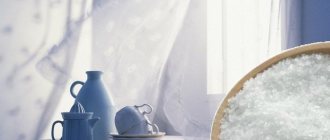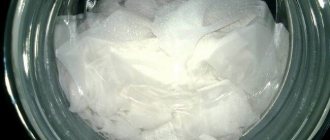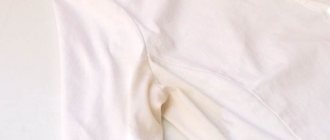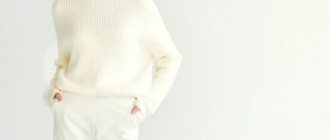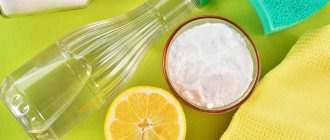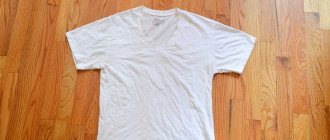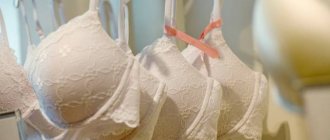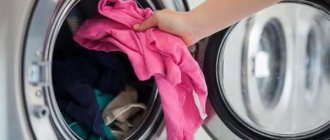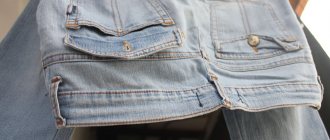How to whiten white shirts: 10 traditional methods
Using store-bought bleaches is not always a rational decision.
Modern housewives know in practice how difficult it is to choose a bleaching agent using trial and error.
Selecting an effective substance for your home arsenal of household chemicals can be difficult for several reasons:
- high cost;
- short duration of effect;
- disappearance of a proven product from store shelves.
Modern housewives know in practice how difficult it is to choose a bleaching agent using trial and error without spoiling a single thing. Affordable and cheap materials will come to the aid of lovers of freshness and cleanliness.
Laundry soap
A solution prepared on the basis of laundry soap has been used in everyday life since time immemorial.
To combat gray color, use brown soap; there are two options for preparing a product based on it:
- Systematically collect soap residues in a glass container. First pour a small amount of water into it for quick swelling. Add liquid as soap accumulates. This option is suitable for bleaching shirts and blouses made of all types of fabric.
- Add 2 pieces of laundry soap without additives to a liter of water, after grating the soap. Leave to swell for 30-60 minutes. Place on low heat. Stir occasionally, avoid boiling the solution. Keep until completely dissolved and a homogeneous mass is obtained.
Vodka with glycerin
It is recommended to soak the item in a solution based on vodka, glycerin and water. For 1 liter of water you will need 300 ml of glycerin and 400 ml of vodka. After thoroughly mixing the ingredients, the product is soaked for half an hour in the resulting solution.
Afterwards you should wash it by hand and rub it with laundry soap. Then send the item to the machine (the mode is set in accordance with the manufacturer’s requirements). Washing is done with the addition of powder with a bleaching effect. If desired, you can add conditioner.
On a note! Using store-bought bleaches or stain removers is not always safe for items. Before using aggressive substances that promise easy removal of dirt, carefully read the tags on things and the instructions for using a particular product.
Potassium permangantsovka
The method is effective, but dangerous.
Using store-bought bleaches or stain removers is not always safe for items.
It should be used carefully, monitoring the concentration of the solution, making sure to completely dissolve the crystals in the liquid:
- Preheat the water to 75-80 °C.
- Pour manganese into water. The color of the resulting liquid should be slightly pink.
- Add washing powder (1 tablespoon of detergent per 2 liters of water).
- Soak a shirt, dress or other item made of white fabric.
- Close the basin with things tightly.
- Keep in the solution until the manganese-washing liquid cools.
- After use, pour out the potassium permanganate and rinse things 2-3 times.
Read more ► How to whiten a white blouse: 7 folk recipes if it has turned gray or yellowed
Hydroperite
To remove yellowness from linen, you can purchase hydroperite at the pharmacy. For 5 liters of water you will need 5 tablets of hydroperite (for convenience, crush them into powder) and 3 tbsp. l. washing powder. The water should be warm. Pre-soak things in this solution.
Afterwards, the blouse, dress or shirt will need to be washed and left for a quarter of an hour. Without rinsing, transfer to the drum, add bleach and washing gel. Select the mode in accordance with the fabric care requirements.
Boric acid
Many whitening products cannot always cope with their task.
Experienced housewives recommend using another pharmacy option. Add 40 ml of acid to 4 liters of water. Leave the fabric in the solution for 3 hours and rinse.
If the stain is not completely removed, spin the item again in the machine with powder or gel.
Sodium perborate
Wool clothing requires a special approach; sodium perborate is a good option for caring for it. Heat 2 liters of water to 40-45 °C, add 150 ml of product. Keep the product in the mixture for a quarter of an hour, then wash it, adding conditioner.
Vinegar
Pure vinegar cannot be used, but if you combine it with tar soap and soak clothes for an hour, the result will exceed expectations.
For the bleach you will need:
- cling film as a cover, protection against air penetration;
- 70 ml table vinegar 9%;
- 2 liters of water, heated to 30 °C.
The duration of soaking is 1 hour. After the time has passed, squeeze out, rub with soap, and spin on intensive mode in the washing machine.
On a note! Before using the chosen method of eliminating stains, it is strongly recommended to rinse the items in cold water. This will help remove dust and prevent the appearance of grayness.
Milk
Whitening using milk powder has earned the recognition of housewives. 200 g of dry product are diluted in 4 liters of water. Things are soaked in the solution for about 40-45 minutes, then washed in the usual way.
Lemon acid
Citric acid can restore the whiteness of things.
Citric acid can restore the whiteness of things . Both natural lemon juice and dry mixture will do. Before applying the acid, the contamination is wetted. Next, apply citric acid and rub in well. After waiting half an hour, the item is washed.
Soda
The product used for baking will get rid of stains on clothes and yellowing. No pre-soaking required. Simply pour equal amounts of washing powder and baking soda into the appropriate compartment and select the normal wash cycle.
The second way to remove stains is to use slaked soda and vinegar. The components taken in equal parts are applied to the fabric in the form of a foamy mass.
Benefits of hydrogen peroxide (peroxide)
Various whitening compositions are prepared with the drug.
- Measure out salt and peroxide - a teaspoon at a time - and dilute the mixture with heated water; this amount will require 2 liters. If synthetics are subjected to bleaching, the water should be heated no higher than 40 degrees. For cotton, heat the water to 70 degrees. The clothes are soaked and kept for 20 minutes, remembering to turn them over periodically.
- Dissolve peroxide (two teaspoons per 4 liters of water). While stirring, keep the product in the solution for 15 minutes, then rinse and dry.
- Mix ammonia and peroxide - a tablespoon at a time - and pour five liters of hot water. The shirt is soaked and kept until the water cools down.
- Heat 2 liters of water to 60 degrees. Add a teaspoon of peroxide and the same amount of soda. Keep the item in the solution for 20 minutes, turning it over periodically.
How to remove yellowness from a shirt collar
Collars and cuffs require special care. They retain traces of perfume, food, liquid, sebum, dust and dirt from tables. The stains are firmly embedded in the material.
Collars and cuffs require special care
Only 4 whitening options can remove the consequences of a working day:
- Talcum powder . Contaminated areas are moistened abundantly and covered with a layer of talc. If it is heavily soiled, you need to rub it gently. Leave for 6-8 hours, wash as usual. Talc is often replaced with chalk without additives.
- The soda-vinegar mixture saves white collar faster than the previous method. The foam mass is applied to dirty places. Leave for 7-10 minutes. and wash it.
- You can also clean the stained area with citric acid Cover the stain with it for 15-20 minutes. Then wash according to the recommendations on the product label.
- laundry soap gel liberally to the surface, leave for 1-2 hours, and wash.
Read more ► How to wash white clothes correctly so that they are snow-white
Rules for bleaching shirts at home
Using the wrong methods when bleaching clothes can affect the quality of the material. In order not to spoil it, you need to follow simple rules:
- You should not bleach things frequently, since the fabric becomes thinner with regular processing.
- When using household chemicals, it is important to follow the instructions and not exceed the dosage. Also, do not lower it, as the effect may be insufficient.
Do not wash colored items with white items
- Colored items cannot be washed together with white ones, since the dye eats into light-colored fabric, and it is not easy to bleach it.
- Synthetics and natural materials are washed separately, as they require different temperatures and modes.
- Sometimes there are colored inserts on white shirts. In this case, it is necessary to add salt to the powder so that the paint does not transfer to light areas.
- Folded white items turn yellow faster, so it is recommended to hang them on hangers.
Dirty laundry is also sorted by color and type of soiling so that it does not become stained or develop stubborn stains.
Household bleaches
Not everyone wants to resort to traditional methods of removing yellowness, grease stains and dirt in order to save white things. It's easier to use chemical compounds.
There is a division into chlorine-containing and oxygen-containing agents:
| Substances | pros | Minuses | Examples |
| Chlorine-containing | Quick results | Aggressive, corrode matter | "Chlorine" |
| Small quantity to use | Acrid odor, can burn mucous membranes | "White" | |
| Acceptable price | Hand and face protection required | "Domestos" | |
| Not suitable for thin materials and underwear | |||
| Oxygen | Hypoallergenic | The result is not always at a high level | "Vanish" |
| Can bleach delicate fabrics, underwear | Expensive | "Ecover" | |
| Suitable for all types of material |
Need to know! A new type of brightener has appeared - optical liquid. It visually removes dirt, the effect lasts up to 8 hours, which is enough for a working day. An example of a product is Belotex.
What is used
To wash and bleach things manually and not spoil them, you need to know which fabrics can be exposed to high temperatures and what you will need for this.
Boil down
Before you start boiling, you need to select a container that can hold at least a bucket of water. An enameled pan without chips, cracks and rust, galvanized boiling water, is suitable for this purpose.
Wooden tongs
In order for the laundry to boil evenly, you need to mix it and take it out not with your hands, but to specially select a device in the form of a stick, a large wooden spoon or tongs.
Methods for cotton fabrics
A shirt made of cotton fabric is convenient and comfortable, but dirt appears on it quickly. Problems can be eliminated by boiling or bleaching with soap or aggressive substances.
You should be more careful with “chemistry”, because... it destroys not only dirt, but also cotton.
Boiling
Applicable for shirts made of durable material. For boiling, dilute 3 tbsp in 5 liters of water. l. powder. Bring to a boil, then reduce the heat, simmer for half an hour, stirring.
Attention! Frequent boiling deforms things, so do not overuse it.
Whitening with laundry soap
Bleaching with laundry soap
This method guarantees the preservation of the shape of the cotton product. Both soap gel and the option of rubbing contaminated areas are used.
The product must be applied generously. Afterwards, put the items in a plastic bag (transparent, without a pattern) and tie it tightly so that air does not penetrate inside. Leave for up to 24 hours and rinse.
Important! Lightening of yellowed material is achieved by soaking in a mixture of hydrogen peroxide and ammonia. You can keep things to bleach in it for no more than 25-30 minutes.
Rules and precautions
Before returning the fabric to whiteness, you should read the information on the clothing label (triangle image). It indicates whether the item can be bleached, the preferred method and temperature of the process.
| Triangle sign | Meaning |
| Empty | Bleaching allowed |
| Crossed out | The use of bleach is prohibited |
| Inside which is written CL | Chlorine bleaches can be used |
| With two stripes inside. Crossed out with CL written inside | It is prohibited to use preparations containing chlorine |
When choosing a bleaching method, you should always consider what material the shirt is made of. The most durable fabrics are linen and cotton; they can be bleached using chlorine-containing products. For other materials, aggressive bleaches cannot be used. For the process to be effective, you need to follow the following precautions:
- white shirts should be soaked at home in plastic containers, not metal;
- You should check your pockets to ensure that no objects are accidentally left there;
- shirts with metal fittings (buttons, snaps, decorative elements) are soaked in cool, barely warm water;
- Abuse of bleaching leads to the fact that any fabric becomes shabby over time, so bleach is used no more than every third or fourth wash.
To whiten white shirts without ruining them, you can do a test: apply the product to an inconspicuous area of clothing, for example, inside a cuff or collar. After the time specified in the instructions, you can evaluate the result.
Soak white shirts in a plastic container
Check pockets before washing
shirts with metal fittings are soaked in cool water
Bleach is used no more than every third or fourth wash.
Linen clothing
Linen is easy to bleach.
It is suggested to use one of the following methods:
- To get rid of gray plaque, it is recommended to add 2 tbsp when washing. l. salt.
- To lighten, soak linen shirts and blouses in soda water. Mix 0.5 kg of soda in 5 liters of liquid. Before use, soak the solution for 24 hours and strain. This product can be stored in a glass container for a long time.
- Turpentine will help make the fabric snow-white. For 1 liter of water add 1 tbsp. l. substances. Soak things for at least 10-12 hours.
- Yellowness can be eliminated with ammonia diluted in water. To do this, add 1 tbsp to a liter of liquid. alcohol
- The last method is vinegar 9%. Pour 100 ml of vinegar into 2 liters. Soak the laundry for 3 hours and wash.
Read more ► How to wash stained white or colored clothes, how to fix them
Application of ammonia
The product is often used as part of “homemade bleaches”.
For 5 liters of slightly warmed water take 5 tbsp. spoons of ammonia. Dip the shirt in the solution for 3 hours, then wash.
The shirt will turn snow-white if you use ammonia and soda. For 5 liters of warm water take 5 tbsp. spoons of soda and 2 tbsp. spoons of ammonia. Soak the gray shirt in the solution and leave for 4 hours. Rinse and wash.
Heat two and a half liters of water to 40 degrees and pour in 50 ml of ammonia. While stirring, add fine salt - two tablespoons is enough. Having lowered the product into the solution, cover the basin with film and a towel. Leave for 45 minutes. Wash the product first by hand, then in a machine, adding washing powder and adding conditioner.
Lightening of synthetics
Synthetic fabrics are one of the most delicate materials.
Use the following tools:
- Aspirin . For 1 shirt you need to take 2-3 tablets. Grind to a powder. Rub into damp cloth. Wash after achieving the desired result.
- Potato . Peel the tuber, cut in half. Rub the desired areas well. Wait until completely dry. Get rid of remaining starch with a brush. After such treatment, wash items in the standard way.
Use of special substances
You can return your shirt to its original whiteness using special products.
Chlorine bleach
It is quite aggressive, but at the same time, effective substance. It is used on dense fabrics. Products made of silk or chiffon will not survive the effects of this drug.
Oxygen bleach
A safe substance that does not cause allergies is used for washing children's clothes. Such products do not have a destructive effect on the fabric and do not damage it. Oxygen bleaches are recommended for use in cold water.
Optical brightener
The drug has no effect on the material. It is characterized by the formation of a thin optical film on the product, which gives the desired result.
List of the most common bleaches:
- Vanish;
- Bos plus;
- Amway;
- Persol;
- Eared Nanny;
- Anti Pyatin;
- Sarma;
- Sail.
Removing specific stains from white items
Specific stains include traces of wine, coffee, fat, sweat, and a ballpoint pen. Don't be discouraged if you didn't manage to remove problem areas the first time.
Elimination methods for repeated and gentle use:
- wine and juice with salt and ammonia. Rub the stain, wash in ammonia water (add 1 tablespoon of ammonia per 2 liters). If you need to remove old stains, the solution should be heated to 70-80 °C.
- Chocolate is eliminated with flour and washing gel. Brew the flour (pour 1 tbsp into 200 ml of boiling water). Add 100 ml of washing gel. Leave things for 25-30 minutes. The technique is not recommended for delicate materials.
- Streaks from a ballpoint pen can be removed with vodka or medical alcohol.
- The fat is cleaned with turpentine and ammonia in a ratio of 1:2.
